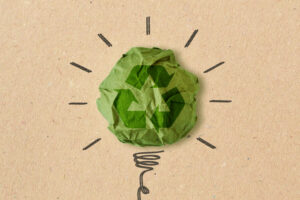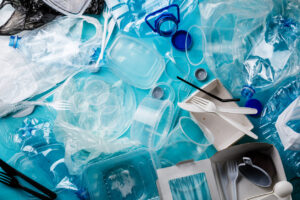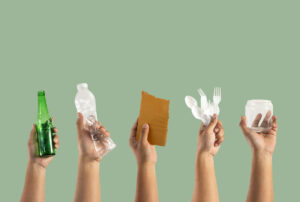Melbourne is undoubtedly a nation of coffee drinkers, with a good café never far away for us to get our caffeine fix. While it would be nice to sit down at the local café with a paper and sip on our coffee, the reality is most of us are busy people – on the way to work and the like and just grab a quick takeaway.
Something that still remains confusing is what to do with a takeaway cup. Is it recyclable? Some bins in public places have labels on the general waste with coffee cup images on them, while others have these on the recycling stream. So what is the answer?
The truth about coffee cup recycling
The truth is that unfortunately even if you think you are doing the right thing and throwing your cup in with the mixed recycling – once the load reaches the MRF for the recycling process the coffee cups will be manually taken out as they are deemed as contamination.
The truth is that unfortunately due to the physical make up of the coffee cup they cannot be recycled. The question of coffee cup recyclability is controversial though as other coated materials such as milk and juice cartons are able to be recycled.
After researching and speaking to various recyclers, there are a few reasons as to why coffee cups cannot or will not be recycled:
- Coffee cups are of a different composition to something like milk cartons (the lining on the coffee cups needs to withstand hot liquid without going soggy so is attached more tightly than milk cartons). Therefore, these would require a specialist facility to recycle.
- Coffee cups may be made of recyclable material but most of the processors are reluctant to accept them as these cups often still contain coffee mixed with coffee bean residue.
- There are too many different types of coffee cups (approx 200 – 300 variants), and all are made up differently – therefore all requiring different specialist facilities to recycle.
Australians use an estimated 1.8 billion disposable coffee cups annually (Source: Australian Plastics Flows and Fates Study 2019–20). This contributes significantly to landfill and highlights the importance of finding better solutions.
On a positive note, the Simply Cups program, launched in 2018, now provides specialised recycling for coffee cups and lids. Simply Cups has expanded its collection points nationwide, including many locations in Melbourne, read more about it here.
Until then, what should we do?
Unfortunately at the moment we do seem to live in somewhat of a ‘throw away culture’ but we should be trying to get out of that mentality. Think about reducing waste and reusing products where we can.
- In terms of our coffee cups, the ideal solution is to use a ‘reusable ‘cup.
- Participate in coffee cup recycling programs – Check if your workplace, school, or local café partners with the Simply Cups program. You can drop off your used cups and lids for proper recycling.
- Dispose of cups responsibly – If no recycling option is available, it’s better to place disposable coffee cups in the general waste bin to prevent contamination of the recycling stream.
At KS Environmental, we are committed to supporting sustainability and reducing waste. We will continue to monitor developments in coffee cup recycling and share updates as they arise.
If you have questions about the recyclability of any other products, please don’t hesitate to contact us.



